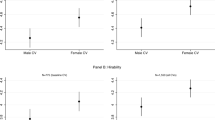Abstract
Prominent ethical and policy issues such as affirmative action and female enrollment in science and engineering revolve around the idea that diversity is good. However, a precise definition is seldom provided. I show that diversity may be construed as a factual description, a craving for symmetry, an intrinsic good, an instrumental good, a symptom, or a side effect. These acceptions differ vastly in their nature and properties. Some are deeply mistaken and some others cannot lead to concrete policies. It is thus necessary to clarify what one means by ‘diversity.’ It may be a neutral description of a given state; but this is insufficient to act. The idea that there should be the same representation in a specific context as in the overall population is both puzzling and arbitrary. Diversity as intrinsic good is a mere opinion, which cannot be concretely applied; moreover, the most commonly invoked forms of diversity (sexual and racial) are not intrinsically good. On the other hand, diversity as instrumental good can be evaluated empirically and can give rise to policies, but these may be very weak. Finally, symptoms and side effects are not actually about diversity. I consider the example of female enrollment in science and engineering, interpreting the various arguments found in the literature in light of this polysemy.
Similar content being viewed by others
References
Hume, D. (1739–40/1948). Dialogues concerning natural religion. New York: Hafner Press.
Gurin, P., Nagda, B. A., & Lopez, G. E. (2004). The benefits of diversity in education for democratic citizenship. Journal of Social Issues, 60, 17–34.
Orfield, G. (2001). Diversity challenged: Evidence on the impact of affirmative action. Cambridge, MA: Harvard Education Publishing Group.
Killenbeck, M. R. (2004). Affirmative action and diversity: The beginning of the end? or the end of the beginning? Princeton: Educational Testing Service.
Regents of the University of California v. Bakke (1986) 438 U.S. 265.
Wygant v. Jackson Board of Education (1986) 476 U.S. 267 (Stevens, J., dissenting).
Sher, G. (1999). Diversity. Philosophy and Public Affairs, 28, 85–104.
Maitzen, S. (1997). Diversity in the classroom. Studies in Philosophy and Education, 16, 293–302.
Coates, H., & Krause, K.-L. (2005). Investigating ten years of equity policy in Australian higher education. Journal of Higher Education Policy and Management, 27, 35–47.
Cohen, J. J. (1997). Finishing the bridge to diversity. Academic Medicine, 72, 103–109.
Lefevre, J. (2003). The value of diversity: A justification of affirmative action. Journal of Social Philosophy, 34, 125–133.
Sullivan, J. F. (2006). A call for K–16 engineering education. The Bridge, 36(2), 17–24.
Lane, N. (1999). Increasing diversity in the engineering workforce. The Bridge, 29(2), 15–19.
Wulf, W. A. (1998). Diversity in engineering. The Bridge, 28(4), 8–13.
Chubin, D. E., May, G. S., & Babco, E. L. (2005). Diversifying the engineering workforce. Journal of Engineering Education, 94, 73–86.
Chen, J. C., Owusu-Ofori, S., Pai, D., Toca-McDowell, E., Wang, S. -L., & Waters, C. K. (1996). A study of female academic performance in mechanical engineering. Frontiers in Education Conference. Available online at: http://fie.engrng.pitt.edu/fie96/papers/276.pdf
Baum, E. (1990). Recruiting and graduating women—the underrepresented student. IEEE Communications Magazine, 28, 47–50.
Bouville, M. (2007). Should we enrol more female students in physics? Physics World, 20(4), 18.
Anderson, L., & Northwood, D. (2002). Recruitment and retention programmes to increase diversity in engineering. International Conference on Engineering Education. Available online at: http://www.ineer.org/Events/ICEE2002/Proceedings/Papers/Index/O065-O070/O069.pdf
American Society for Engineering Education (1999). ASEE statement on diversity. Available online at: http://www.asee.org/about/Diversity.cfm
Gates, E. (2006). A scientific point of view. Physics Today, 59(4), 64–65.
O’Brien, T. P., Bernold, L. E., & Akroyd, D. (1998). Myers–Briggs type indicator and academic achievement in engineering education. International Journal of Engineering Education, 14, 311–315.
Felder, R. M., Felder, G. N., & Dietz, E. J. (2002). The effects of personality type on engineering students performance and attitudes. Journal of Engineering Education, 91, 3–17.
Pless, N. M., & Maak, T. (2004). Building an inclusive diversity culture: Principles, processes and practice. Journal of Business Ethics, 54, 129–147.
Wise, L. R., & Tschirhart, M. (2000). Examining empirical evidence on diversity effects: How useful is diversity research for public-sector managers? Public Administration Review, 60, 386–394.
Tilman, D. (2000). Causes, consequences and ethics of biodiversity. Nature, 405, 208–211.
Weitzman, M. L. (1992). On diversity. Quarterly Journal of Economics, 107, 363–405.
Appiah, K. A. (2005). The ethics of identity. Princeton: Princeton University Press.
Russell, B. (1918/1985). The Philosophy of Logical Atomism. Chicago: Open Court.
Nietzsche, F. (1878). Human, all too human.
Mill, J. S. (1871/1998) Utilitarianism. Oxford: Oxford University Press.
Moore, G. E. (1903). Principia ethica. Cambridge: Cambridge University Press.
Williams, B. (1985). Ethics and the limits of philosophy. London: Routledge.
Author information
Authors and Affiliations
Corresponding author
Rights and permissions
About this article
Cite this article
Bouville, M. Is Diversity Good? Six Possible Conceptions of Diversity and Six Possible Answers. Sci Eng Ethics 14, 51–63 (2008). https://doi.org/10.1007/s11948-007-9032-7
Received:
Accepted:
Published:
Issue Date:
DOI: https://doi.org/10.1007/s11948-007-9032-7




